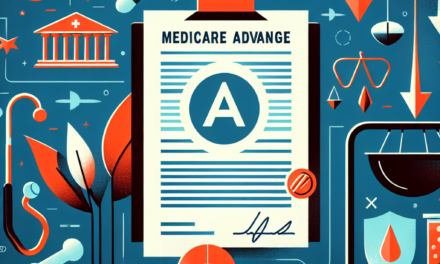Hospital Analysts on Edge Amid Rising Market Volatility
In recent years, the healthcare sector has faced unprecedented challenges, particularly in the wake of the COVID-19 pandemic. As the world grapples with economic uncertainty, hospital analysts find themselves navigating a landscape marked by rising market volatility. This article delves into the factors contributing to this volatility, the implications for hospital analysts, and strategies for managing risk in an unpredictable environment.
Understanding Market Volatility in Healthcare
Market volatility refers to the fluctuations in the price of assets, which can be influenced by various factors, including economic indicators, political events, and changes in consumer behavior. In the healthcare sector, volatility can have profound implications for hospital operations, funding, and patient care.
Several key factors contribute to the current state of market volatility in healthcare:
- Economic Uncertainty: The global economy has been in a state of flux, with inflation rates rising and supply chain disruptions affecting various industries, including healthcare.
- Policy Changes: Legislative changes, such as shifts in healthcare policy and funding, can create uncertainty for hospitals and healthcare providers.
- Technological Advancements: Rapid advancements in medical technology can lead to significant shifts in market dynamics, impacting how hospitals operate and compete.
- Patient Behavior: Changes in patient preferences and behaviors, particularly in the wake of the pandemic, can influence hospital revenues and service demand.
- Global Health Crises: Events like the COVID-19 pandemic can lead to sudden and dramatic changes in healthcare demand and resource allocation.
Understanding these factors is crucial for hospital analysts as they assess the financial health of healthcare institutions and make strategic decisions. The volatility in the market can lead to increased pressure on hospital budgets, necessitating a more agile and informed approach to financial management.
The Role of Hospital Analysts in a Volatile Market
Hospital analysts play a critical role in navigating the complexities of the healthcare market. Their responsibilities include financial forecasting, budgeting, and performance analysis, all of which are essential for ensuring the sustainability of healthcare institutions.
In a volatile market, the role of hospital analysts becomes even more pronounced. They must:
- Monitor Financial Performance: Analysts are tasked with closely monitoring key financial metrics, such as revenue, expenses, and profit margins. This requires a keen understanding of market trends and the ability to adapt to changing conditions.
- Conduct Risk Assessments: Identifying potential risks and their impact on hospital operations is crucial. Analysts must evaluate both internal and external factors that could affect financial stability.
- Develop Strategic Plans: In response to market volatility, analysts must work with hospital leadership to develop strategic plans that address potential challenges and capitalize on opportunities.
- Engage in Scenario Planning: Given the unpredictability of the market, scenario planning becomes essential. Analysts must create various financial models to prepare for different potential outcomes.
- Communicate Insights: Effective communication of financial insights to stakeholders, including hospital administrators and board members, is vital for informed decision-making.
For example, during the COVID-19 pandemic, hospital analysts had to quickly adapt their financial models to account for changes in patient volume, shifts in reimbursement rates, and increased operational costs. This adaptability is crucial in a volatile market where conditions can change rapidly.
Impact of Rising Costs on Hospital Operations
One of the most significant challenges facing hospitals amid rising market volatility is the increase in operational costs. These costs can stem from various sources, including labor, supplies, and technology investments.
Labor costs have been a particular concern, as hospitals have faced staffing shortages and increased wages to attract and retain qualified personnel. According to a report from the American Hospital Association, labor costs account for approximately 50% of total hospital expenses. As demand for healthcare services rises, hospitals must find ways to manage these costs without compromising patient care.
Additionally, supply chain disruptions have led to increased prices for medical supplies and equipment. The pandemic highlighted vulnerabilities in global supply chains, causing delays and shortages that have forced hospitals to seek alternative suppliers or pay higher prices for essential items.
To address these rising costs, hospitals can consider the following strategies:
- Operational Efficiency: Implementing lean management practices can help hospitals streamline operations and reduce waste, ultimately lowering costs.
- Negotiating Contracts: Hospitals can negotiate better contracts with suppliers to secure more favorable pricing and terms.
- Investing in Technology: While technology investments can be costly upfront, they can lead to long-term savings through improved efficiency and reduced labor costs.
- Workforce Management: Utilizing workforce management tools can help hospitals optimize staffing levels and reduce overtime costs.
- Telehealth Services: Expanding telehealth services can reduce the burden on physical facilities and allow hospitals to serve more patients with fewer resources.
By proactively addressing rising costs, hospitals can better position themselves to withstand market volatility and maintain financial stability.
Financial Forecasting in Uncertain Times
Financial forecasting is a critical function for hospital analysts, particularly in times of market volatility. Accurate forecasting allows hospitals to anticipate changes in revenue and expenses, enabling them to make informed decisions about resource allocation and strategic planning.
In a volatile market, traditional forecasting methods may no longer be sufficient. Analysts must adopt more dynamic approaches that account for uncertainty and variability. This can include:
- Rolling Forecasts: Instead of relying on static annual budgets, hospitals can implement rolling forecasts that are updated regularly to reflect changing conditions.
- Scenario Analysis: Analysts can create multiple financial scenarios based on different assumptions about market conditions, allowing hospitals to prepare for various outcomes.
- Data Analytics: Leveraging advanced data analytics tools can help analysts identify trends and patterns that may not be immediately apparent, improving the accuracy of forecasts.
- Collaboration with Clinical Teams: Engaging clinical teams in the forecasting process can provide valuable insights into patient demand and service utilization, enhancing the accuracy of financial projections.
- Monitoring Key Performance Indicators (KPIs): Regularly tracking KPIs can help analysts identify early warning signs of financial distress, allowing for timely interventions.
For instance, during the early months of the COVID-19 pandemic, many hospitals faced a sudden drop in patient volume due to elective procedure cancellations. Analysts who had implemented rolling forecasts were better equipped to adjust their financial projections and make necessary budgetary changes in response to this unexpected shift.
Strategies for Risk Management in Healthcare
As market volatility continues to pose challenges for hospitals, effective risk management strategies are essential for safeguarding financial stability. Hospital analysts must work closely with leadership to identify potential risks and develop comprehensive risk management plans.
Key components of a robust risk management strategy include:
- Risk Identification: Hospitals must conduct thorough assessments to identify potential risks, including financial, operational, and reputational risks.
- Risk Assessment: Once risks are identified, analysts should evaluate their potential impact on hospital operations and financial performance.
- Mitigation Strategies: Developing strategies to mitigate identified risks is crucial. This may involve diversifying revenue streams, enhancing operational efficiency, or investing in technology to improve patient care.
- Monitoring and Reporting: Regularly monitoring risks and reporting findings to hospital leadership ensures that decision-makers are informed and can take appropriate action.
- Crisis Management Plans: Hospitals should have crisis management plans in place to respond quickly to unexpected events, such as natural disasters or public health emergencies.
A case study that illustrates effective risk management in healthcare is the response of hospitals during the COVID-19 pandemic. Many hospitals quickly adapted their operations to address the surge in patients while implementing safety protocols to protect staff and patients. Those with established risk management frameworks were better positioned to respond effectively to the crisis.
Conclusion: Navigating the Future of Healthcare Finance
The rising market volatility presents significant challenges for hospital analysts, requiring them to adapt their strategies and approaches to financial management. By understanding the factors contributing to volatility, embracing dynamic forecasting methods, and implementing robust risk management strategies, hospital analysts can help ensure the financial stability of healthcare institutions.
As the healthcare landscape continues to evolve, analysts must remain vigilant and proactive in their efforts to navigate uncertainty. The ability to adapt to changing conditions, coupled with a commitment to data-driven decision-making, will be essential for success in this challenging environment.
In summary, the key takeaways from this article include:
- The importance of understanding market volatility and its impact on healthcare.
- The critical role of hospital analysts in monitoring financial performance and developing strategic plans.
- The challenges posed by rising operational costs and the need for effective cost management strategies.
- The necessity of dynamic financial forecasting methods in uncertain times.
- The significance of comprehensive risk management strategies to safeguard financial stability.
As we look to the future, the resilience and adaptability of hospital analysts will play a pivotal role in shaping the financial landscape of healthcare, ensuring that institutions can continue to provide high-quality care in an ever-changing environment.





